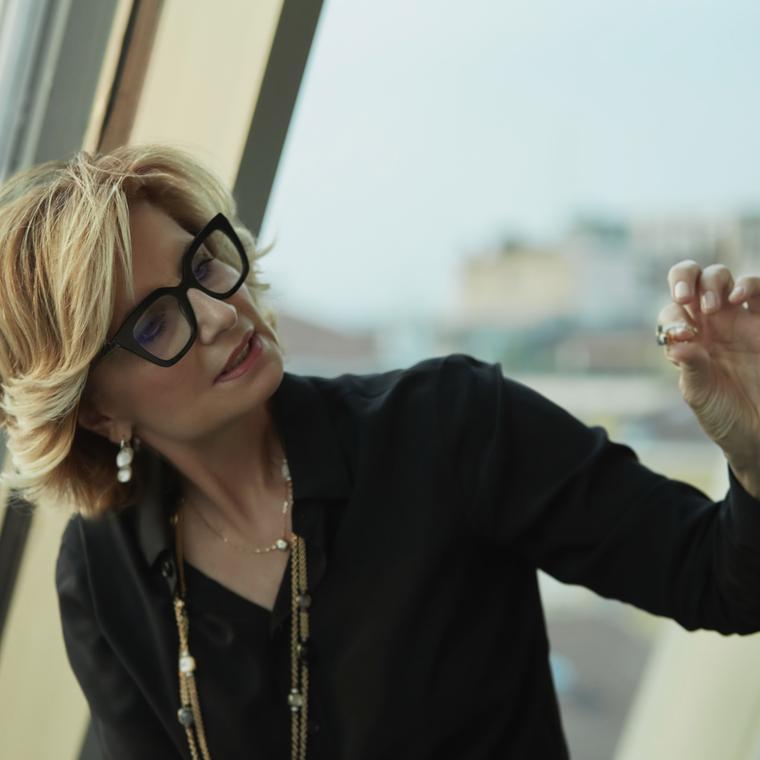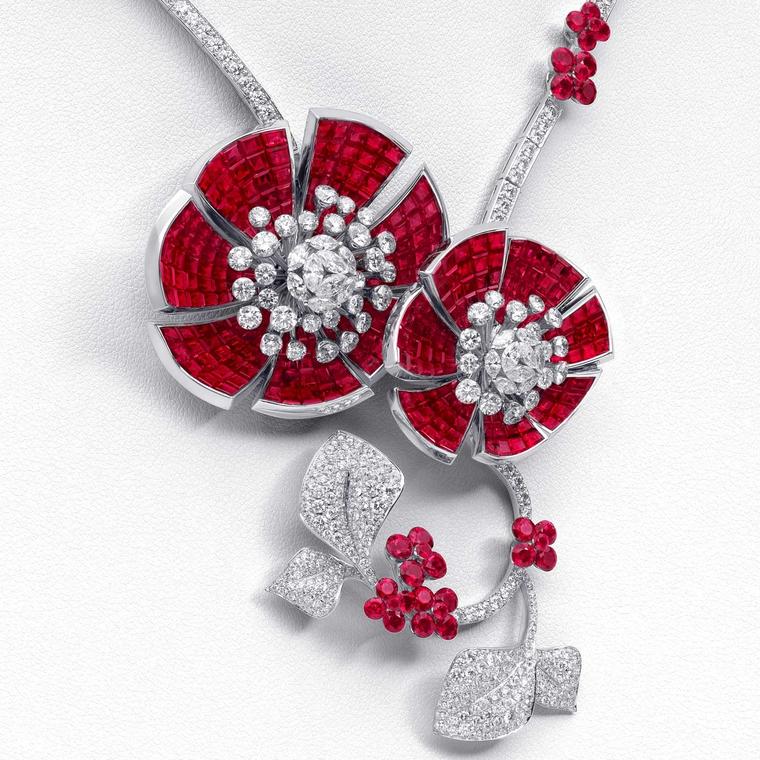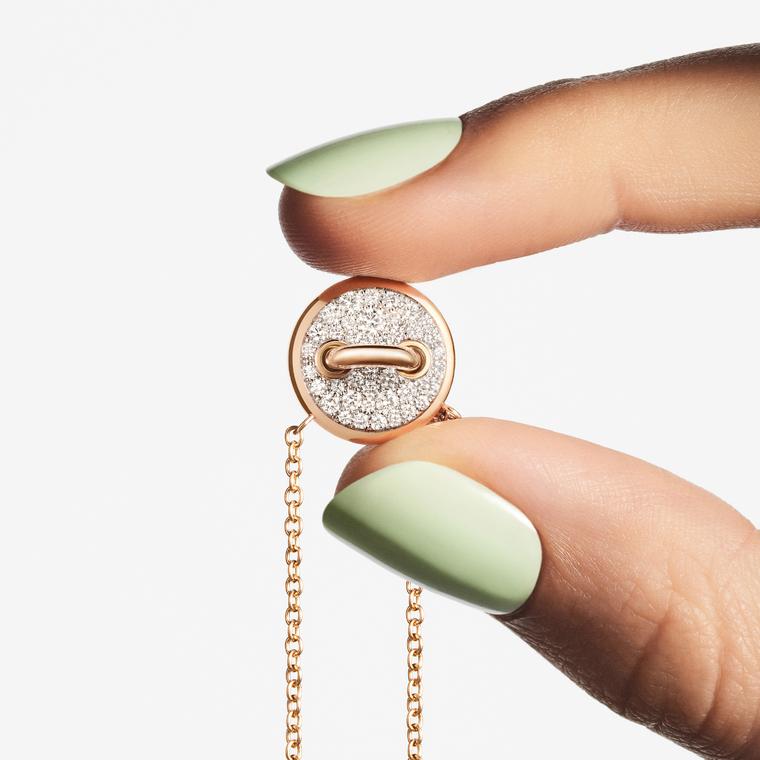
Stones or design? Which comes first for a jewellery brand? There are those who like the stone to dictate what the final piece will be, others who prefer something more structured. The design comes first with the stones selected to fit the parameters set by the designer.
For Pomellato it is the stone that is the genus. It has its own philosophy of gemstones it calls “Pomellato e le pietre libre” or Free Gems. In practice what that means is celebrating the unique character of every stone. For Pomellato’s creative director, Vincenzo Castaldo, this philosophy finds its purist expression in the Nudo ring.
First launched in 2001, it was renowned for its revolutionary way of securing the stone to the band. Rather than disturbing the beauty of the gem with claws, it created a collet at the base of the stone making the stone appear to float above the band. That wasn’t the only unusual part of the design – the stones were also all asymmetrically cut with softened edges. “Nudo defines liberty in the way that the gemstone is devoid of settings and prongs,” explains Castaldo. “Thanks to our special cut and setting technique, we enhance the individuality of the gem. Unconstrained, the light plays with the transparency and the irregularities of the 57 facets.”

Nudo isn’t the only way Pomellato explores this idea of freedom. It likes to set diamonds in an irregular pavé that is dictated by the character of the stone rather than the will of the setter – the positioning of each diamond chosen specifically to create plays of light and shadow. It is also a brand that champions using stones in their rough form. “We have created one-of-a-kind high jewellery pieces using rough gemstones precisely because they have their own natural beauty and character; they are a pure expression of independence,” explains Stefano Cortecci, gem master for Pomellato. “When we use more conventional stone cuts, we express the ‘Free Gems’ concept through colour. In the ‘Ode to Milan’ high jewellery collection, we chose a range of evocative gems in unusual colours that are vibrant and express strong emotions.”
Family-owned Greek fine jewellery brand Lalaounis takes a similarly organic approach to using stones in its pieces. “For us it is first and foremost about the gold, we use stones to complement the metal,” says Demetra Lalaounis, director of international operations at the brand, which was founded in 1941 by her father Illias and that continues to be a family-run business with the three Lalaounis sisters all involved in all aspects of the company. “Stones aren’t the main thing for us, it’s all about the techniques such as filigree, hand hammering, granulation, and hand weaving; all ancient skills we have revived.”
Given that many of the collections take their references directly from ancient pieces that have been excavated, the team at Lalaounis, led by Creative Director Maria Lalaounis, carefully chooses stones that reflect the period, using deep colours such as rubies, sapphires, and emeralds in its Byzantine collection to evoke the rich shades found in church mosaics from that period. Decisions are also made based on which types of tones complement the techniques used – using cabochons with filigree work, for example. “Nothing is ever decided completely,” she says. “There is always a common thread, design-wise, but in the process of making a piece, things can change.”
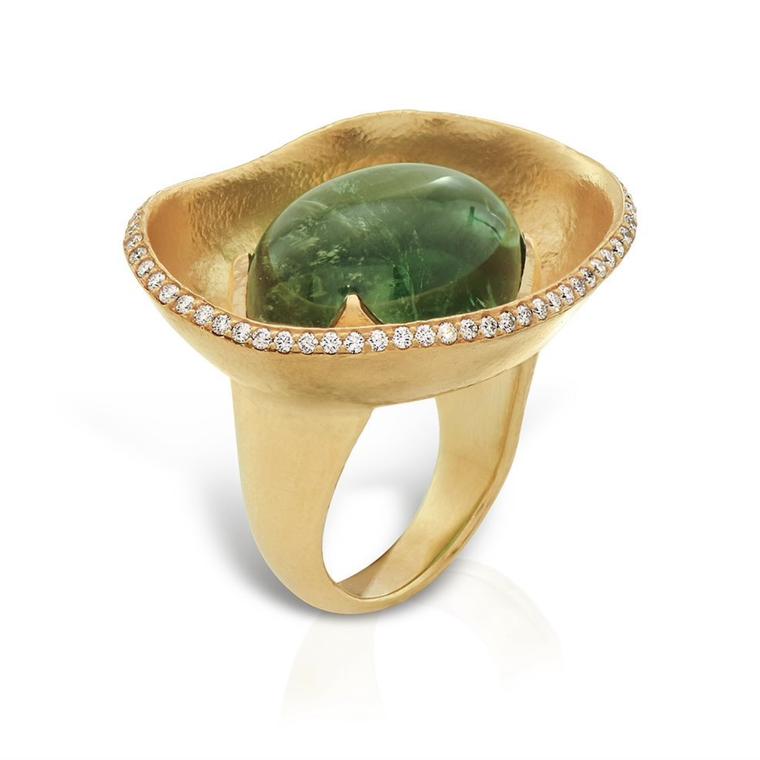
One of the things that hasn’t changed is the brand's love of gemstones. “After my finance degree, I studied gemmology and became fascinated with the world that you can see in a stone through a microscope,” Demetra says. Lucky for her she works with a brand that has a love of using stones with inclusions. “Obviously you don’t want something that breaks the surface,” she says, “But inclusions are character. It is that stone’s passport, its ID, what makes it unique. There is beauty in what some people think of as imperfections.”
Imperfections are definitely not on the menu at Bulgari. The Italian Maison’s signature is large cabochons that have a glossy “boiled sweet” beauty to them. Bulgari started using coloured stones at the beginning of the 20th century when many jewellery houses were defaulting to diamonds. Bulgari was right to play the long game.
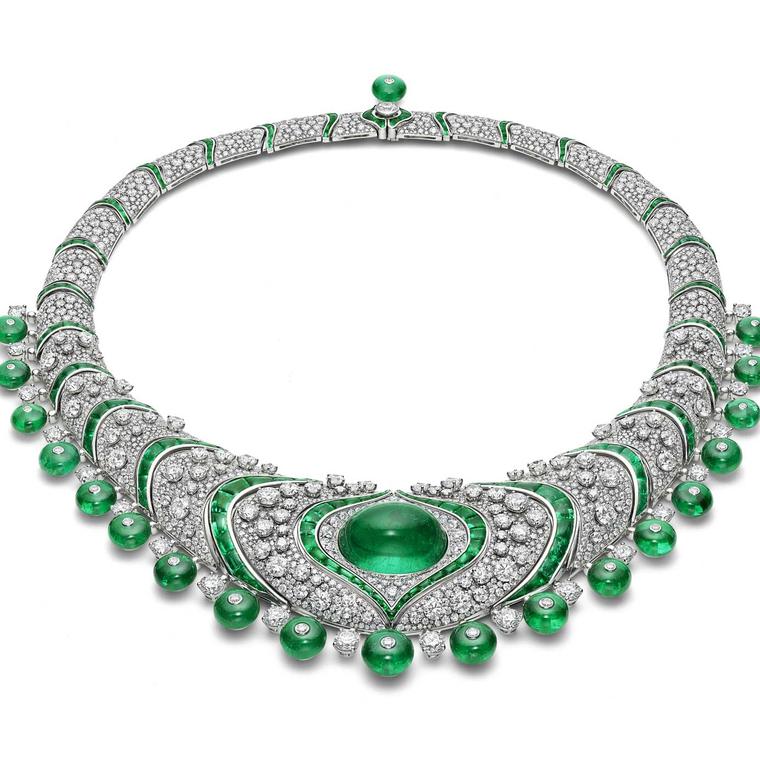
Demand for coloured stones rocketed during the 1970s; something the Maison capitalised on. Luckily this love of colour is shared by its current creative director, Lucia Silvestri. She is a stone obsessive, as seen in the documentary Inside the Dream, which reveals the secrets behind crafting a high-jewellery masterpiece from selecting the stones in Jaipur through its conception at Bulgari’s HQ to its realisation at the hands of its skilled artisans at its atelier.
Colour is a passion at German brand Stenzhorn but given that it came into being after its founder Klaus was invited to visit an emerald mine in Columbia and became bewitched by the beauty of these stones, the company takes a more design-first approach, with some caveats, of course. “Our designs are not created around a specific stone. Of course, during the design process, we have a precise idea of which coloured stones we want to use, but the selection is not made in advance,” explains Patrizia Stenzhorn.

“The stone selection is one of the most time-consuming processes. We carefully select the needed sizes and colours. To achieve the same colour in our invisible setting items we source so many stones that we can use only five to ten per cent of the viewed stones.” The care and attention is obvious in the creations. Poppies are picked out in blood-red rubies, each stone exactly the same shade as its companion; the delicate blush of pink sapphires create a foil to prettily fuchsia rubies in its A Fior de Rosa collection, and, as you would expect, the emeralds are the colour of an Amazonian rainforest.
Bucherer’s fine jewellery collection is equally kaleidoscopic and the shades of gemstones is something that influences the creation of the pieces. Cocktail rings shimmer with gobstopper-size sapphires or vivid chrysoberyls.
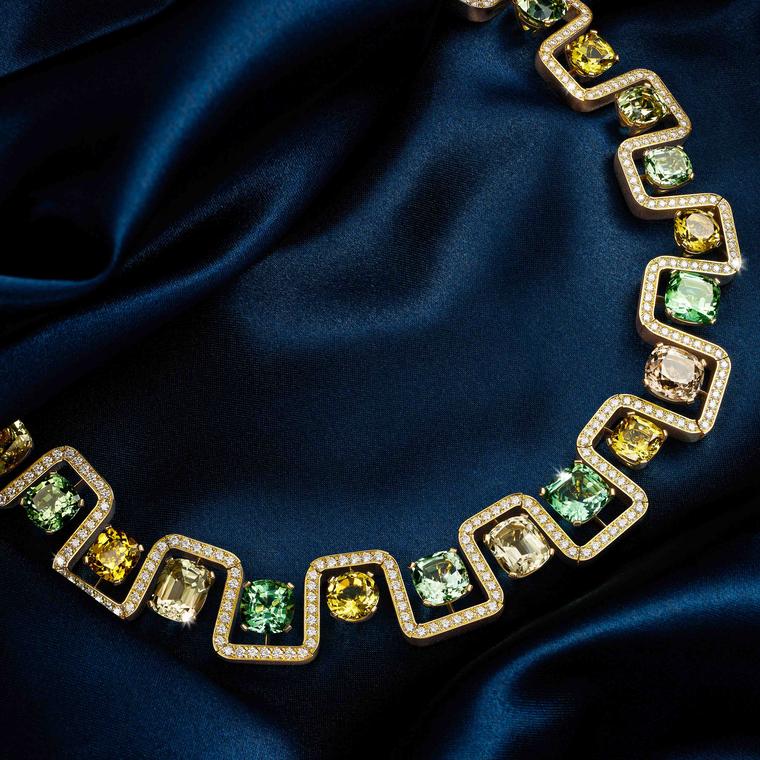
Its Manhattan Collier is a riot of tourmalines, fiery garnets in red and orange all surrounded by a river of 340 diamonds; the combined effect like the first rays of a beautiful sunset reflected in the Hudson. “All our bigger pieces are made in our atelier in Lucerne,” explains Danilo Cariola, the Maison’s jewellery expert. “And we don’t shy away from using treated stones. People think ‘treated’ means not natural, but it can actually make their colours more beautiful.”
For Louis Vuitton’s new LV collection it is the cut of the stone that dictates the design. For the collection, the Maison debuted a brand-new proprietary stone cut – the LV Monogram Star. Based on the star-shaped monogram flower created by George Louis-Vuitton in 1896 to use on luggage, it has 53 facets and been turned into a playful line of rings, pendants, and earrings designed by artistic director of watches and jewellery, Francesca Amfitheatrof. As with everything Vuitton does, the Maison’s icons are everything.
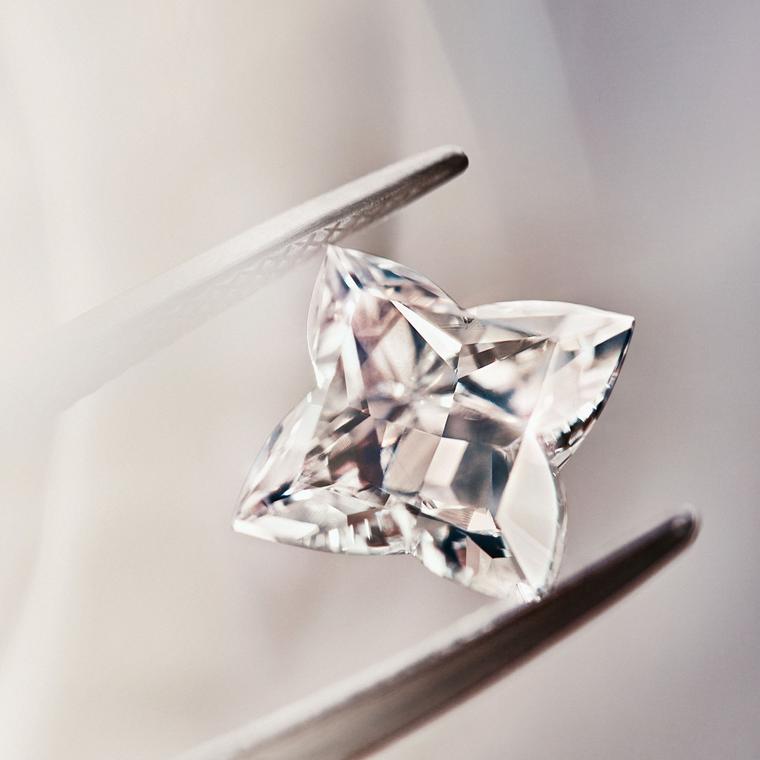
Half-paved rings call to mind the Art-Deco style V, with which Gaston-Louis Vuitton would adorn his suitcases in the 1920s and 1930s; bands are inspired by the Damier canvas created by Georges in 1888. It is a beautiful use of a very unusual stone cut.
It is an intense passion for stones in general but diamonds in particular, fostered by founder Laurence Graff, that drives everything at this extraordinary family business. “I have always been fascinated by diamonds,’ he says; “I remember looking at them, studying them closely to understand their purity, and the way they had been cut. It was an inherent feeling that has turned in to a lifelong passion.” It is this that has led to the brand acquiring some of the most famous stones in the world from the Infinity Diamond coming in a 157.80cts in heart-shaped form.

Or the Golden Empress, a fancy intense yellow cushion-cut from a rough unearthed in the kingdom of Lesotho, weighing 132.55cts. Somewhat unusually for Graff, its latest collection hasn’t taken its cue specifically from the stones but from the Graff’s famous “green lady” who first appeared in an advertising campaign in 1990. In the advert, a woman with skin the colour of Oz’s infamous witch drips with diamonds; the verdancy of her skin a perfect foil for the jewellery. She has appeared in various forms over the years and now she is back, transported to an otherworldly planet to showcase six looks comprising some of the most superlative stones in the world.
Fellow Londoner David Morris combines the two approaches – choosing to let both the stones and the designs inform its high jewellery collections. CEO and creative director Jeremy Morris sources all the stones – a process that can take years due to the rarity of the gems used and the specific colour matching.
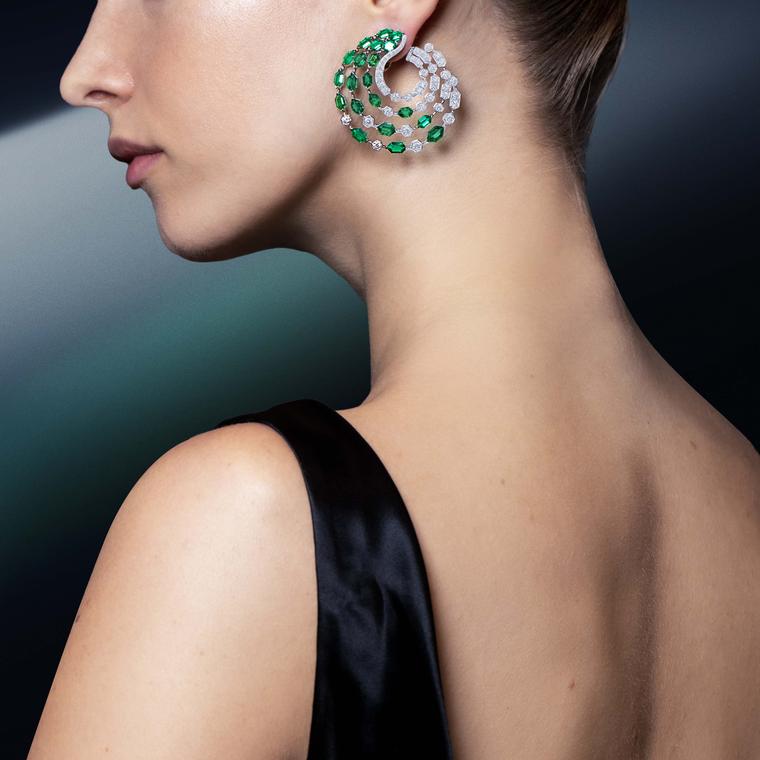
Morris then lets his intuition guide him when deciding exactly how those stones can be best represented in a piece of jewellery; even changing designs during the creative process to ensure that they are showcased in their best possible light. Interestingly, it is from auctions that Morris has continually sourced stones. By acquiring pre-loved pieces and resetting them into more modern designs, he is able to create designs around exquisite gems that may not be readily obtainable.
Precious stones have inspired humanity for centuries and we have the artifacts to prove it. Whether the stone came first, or the design is probably not really the point. It is that, for thousands of years, nature’s creativity and man’s has existed side by side; one informing the other in the pursuit of beauty.




